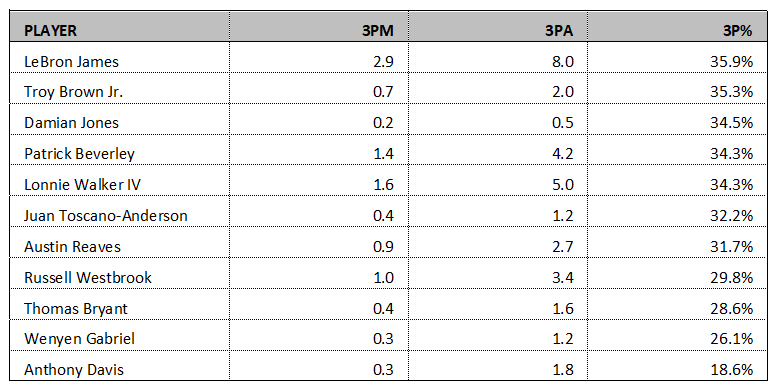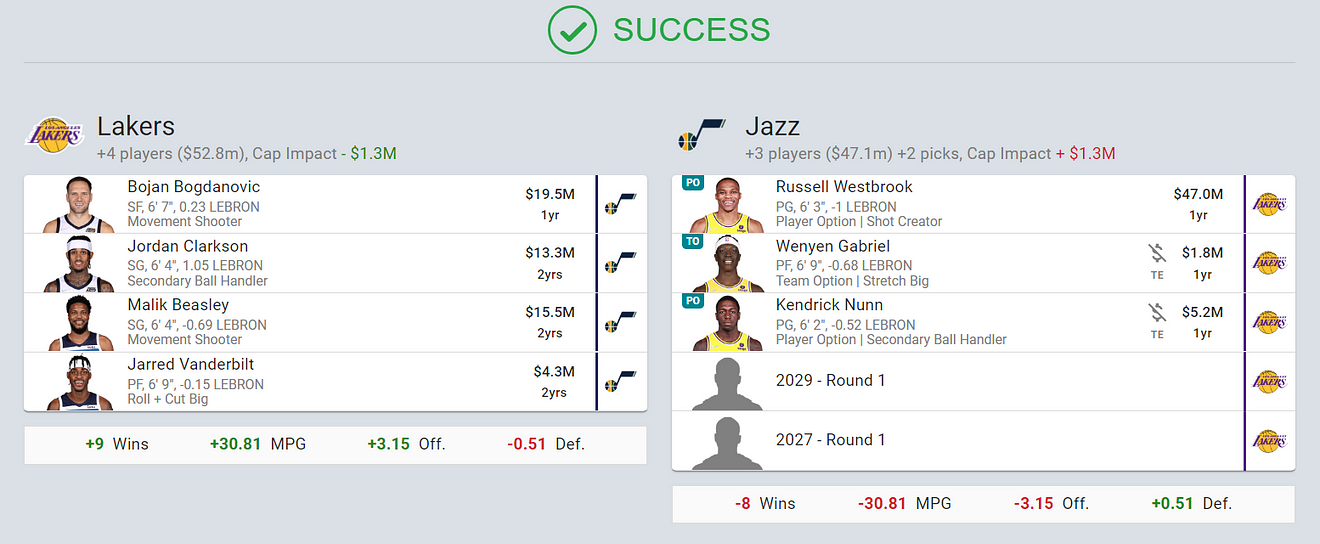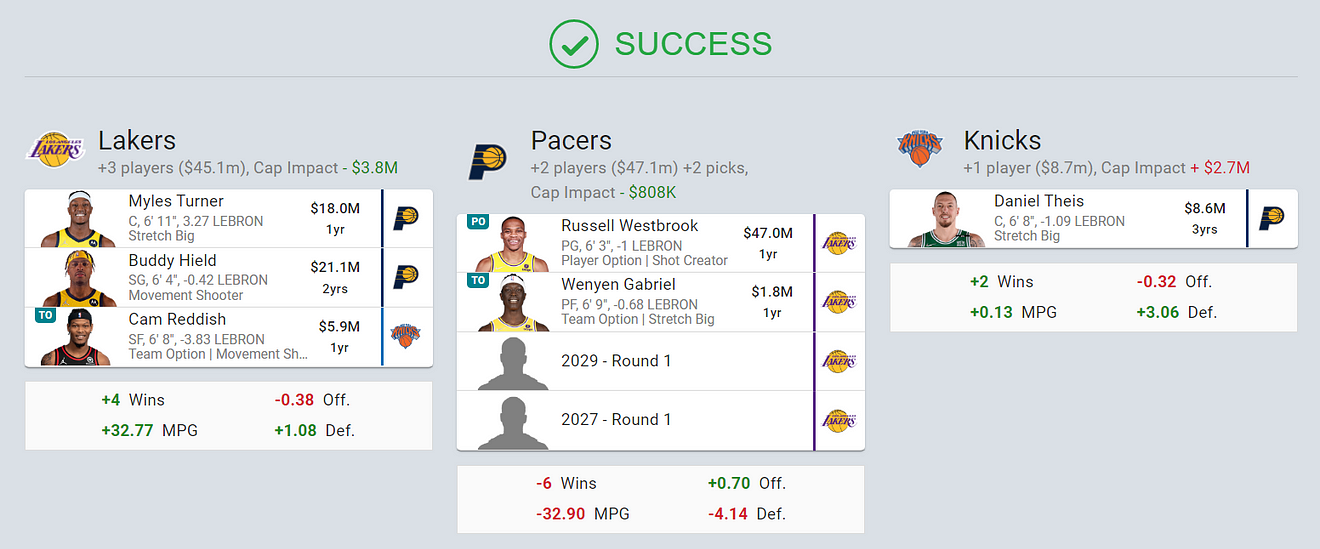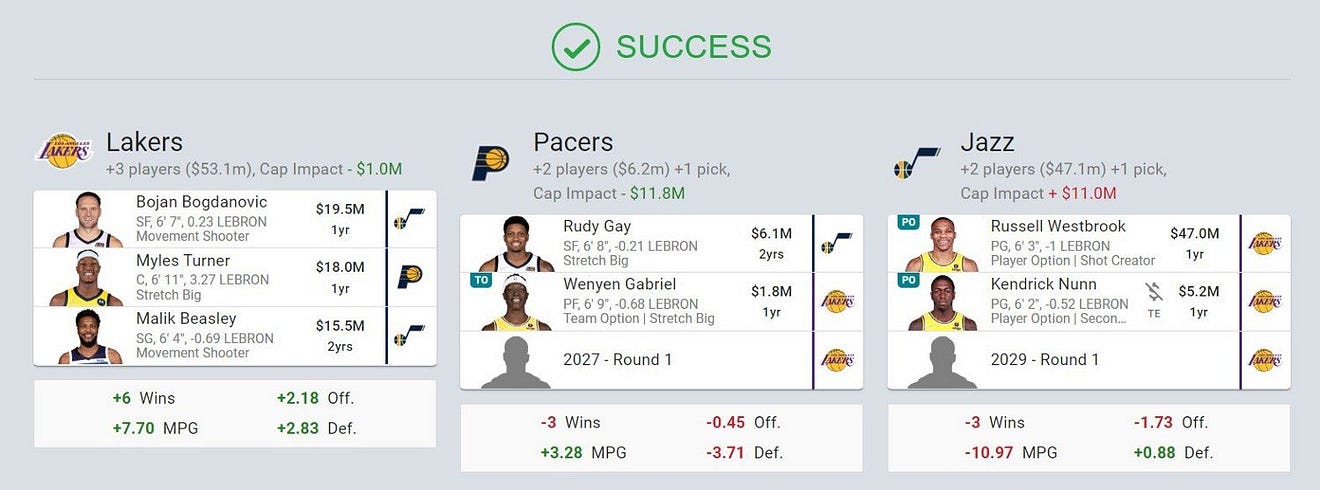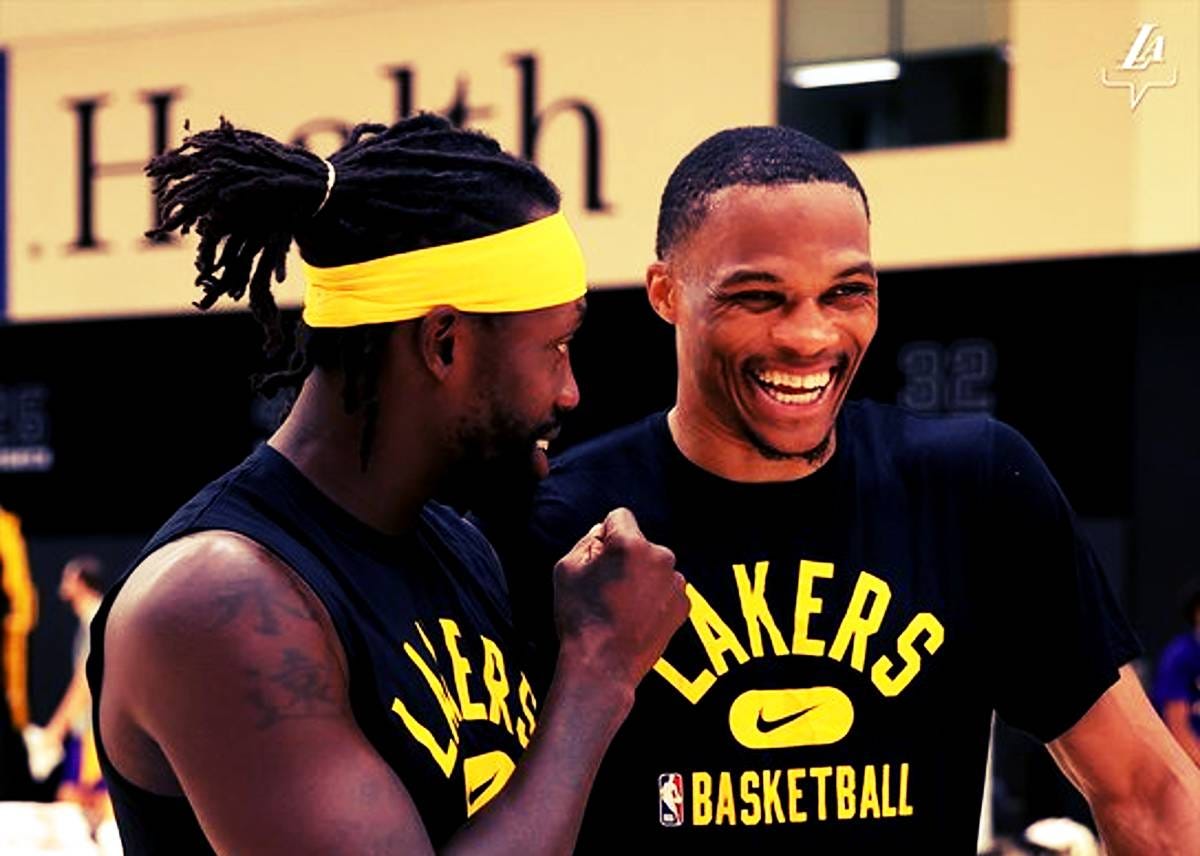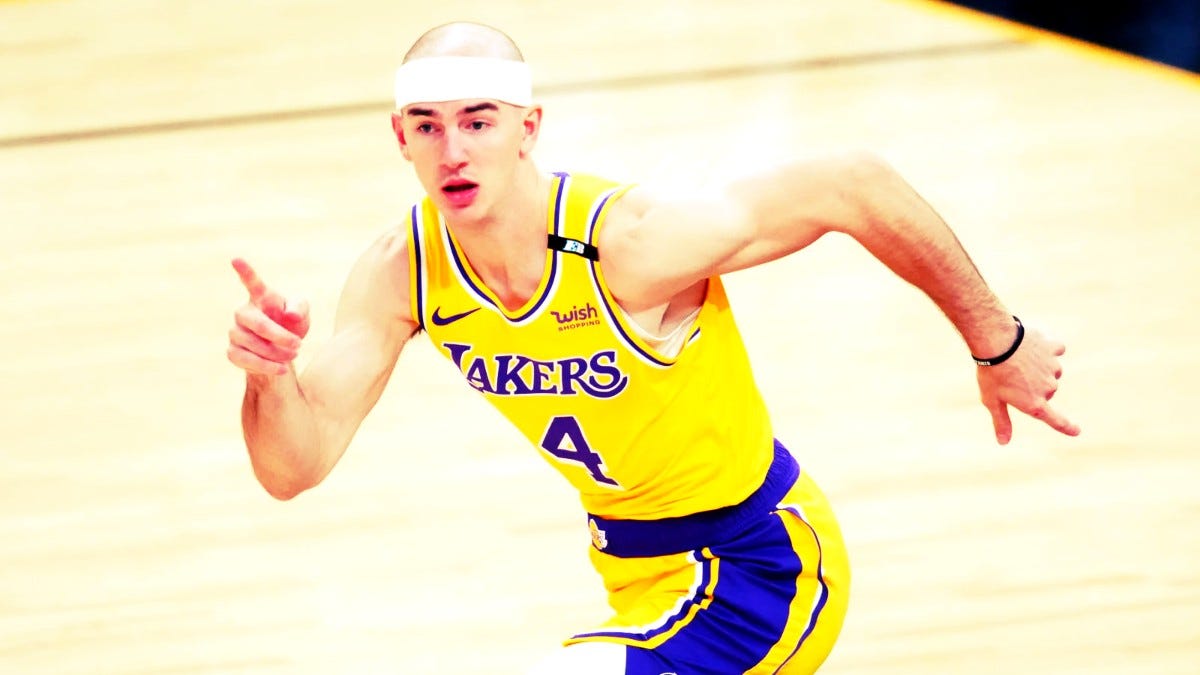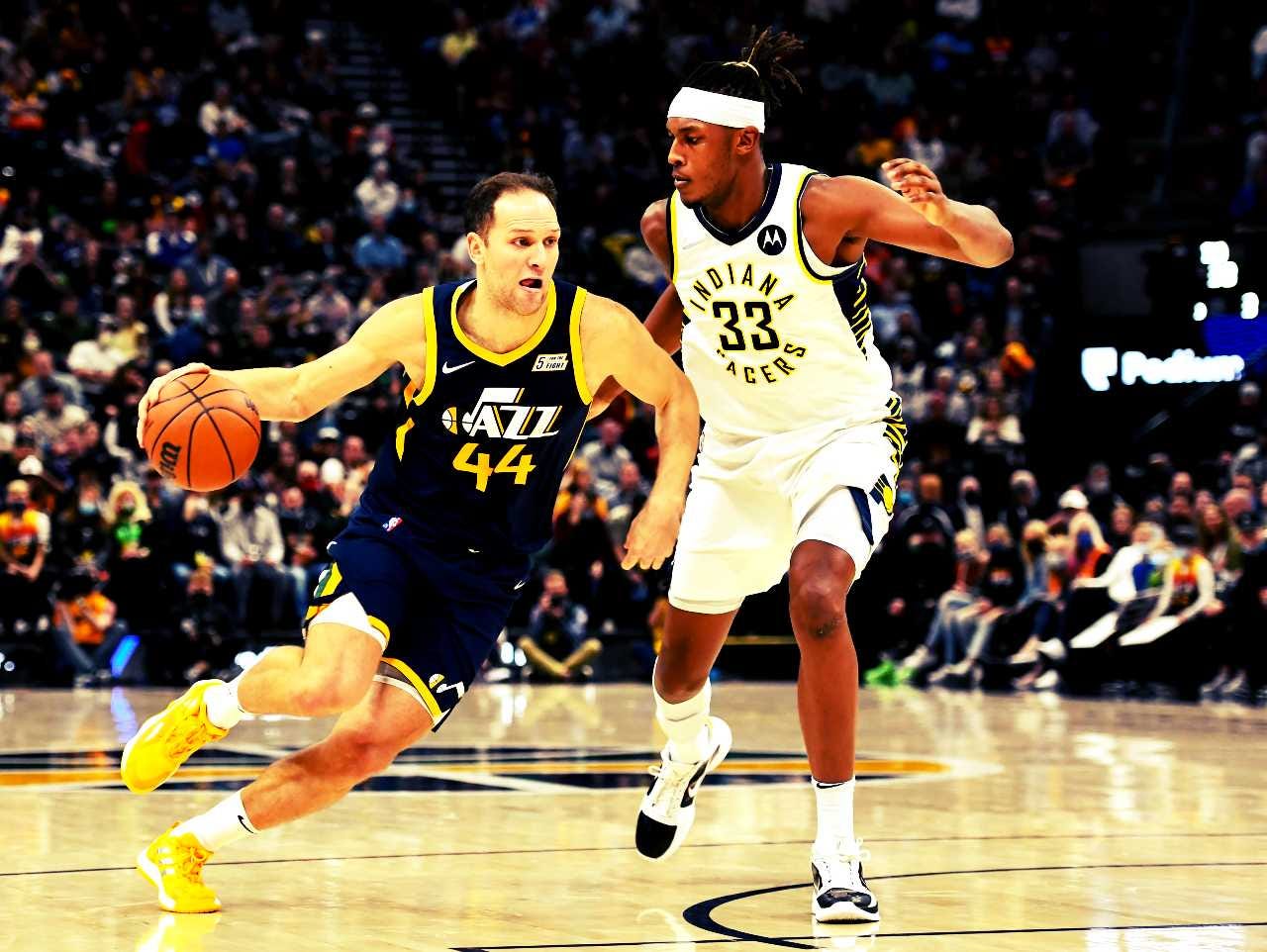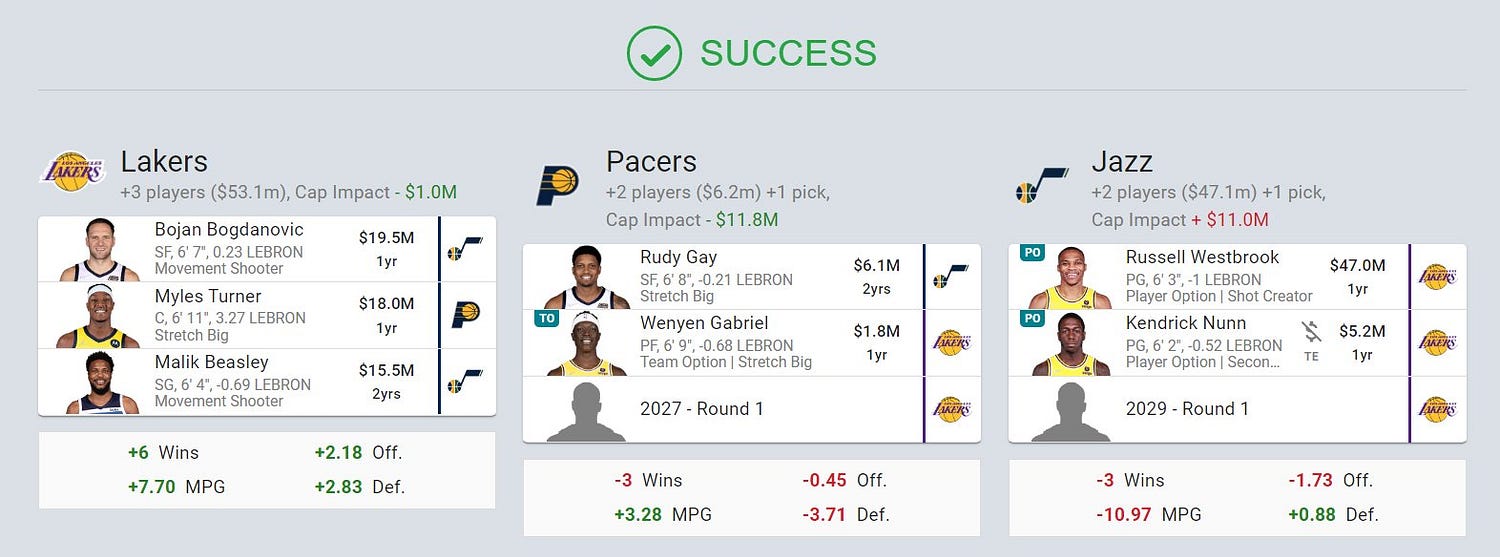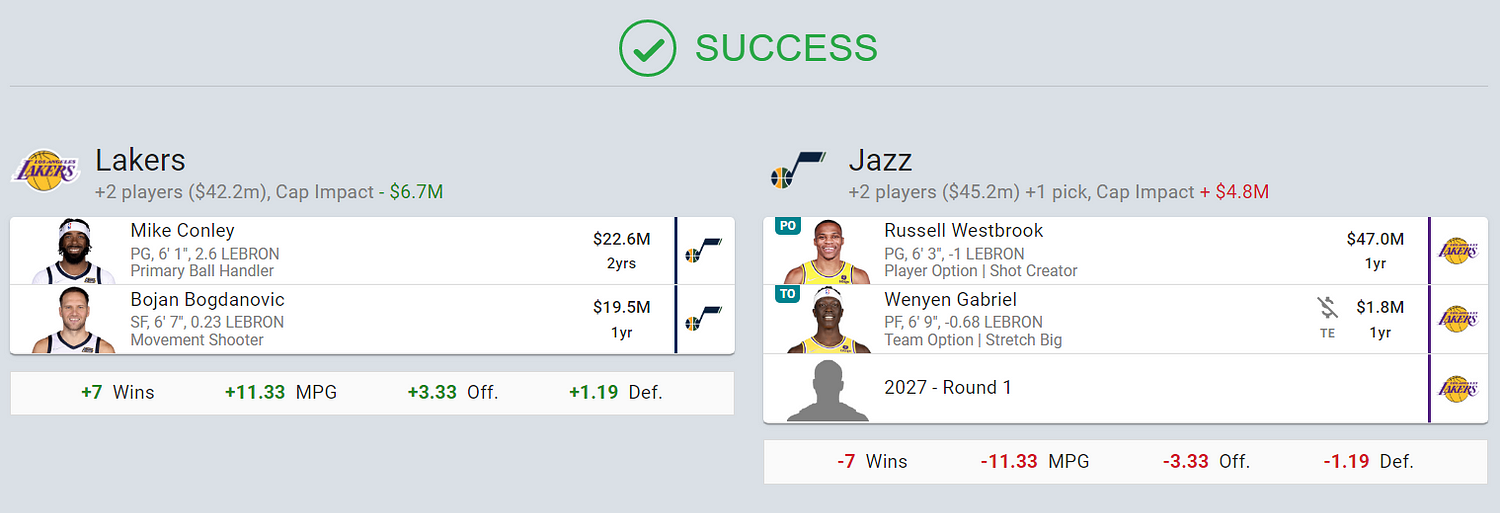The Los Angeles Lakers have done a great job executing an inspired public relations campaign to convince other teams they’d prefer to bring Russell Westbrook back rather than giving up two first round picks to trade him.
With less than three weeks until training camp, the Lakers now appear to be toughening their stance on trading Russell Westbrook and getting ready to head into camp and start the regular season with him on active roster. The Lakers believe neither the Pacers or Jazz trades are deserving of a second first round draft pick and, barring those teams lowering their asking price, the Lakers would prefer to go forward with Russ on the roster.
Whether the Lakers will change their position on trading Westbrook remains to be seem but the team’s current roster is an unfinished product that lacks 3-point shooting and bigger wings to backup James and Davis. Frankly, anybody who watched how poorly Westbrook fit on the Lakers last season has to shudder at the thought of the Lakers wasting one of the only two guaranteed seasons left on LeBron James contract with Los Angeles.
The big question is whether the Los Angeles Lakers are committing suicide by bringing back Russell Westbrook, who refused to be coached last season and could theoretically cause total chaos and disarray in the locker room. Whether Darvin Ham can transform Westbrook into a plus contributor who plays defense and accepts a role is just one of the Lakers’ challenges. Other issues include the Lakers overall lack of 3-point shooting and wing size.
While I believe the Lakers are still just posturing and will ultimately trade Westbrook this offseason, let’s take a look at where they might be at the midseason trade deadline and next summer if they bring back Russ.
Where Would Lakers Be At Trade Deadline If They Keep Westbrook?
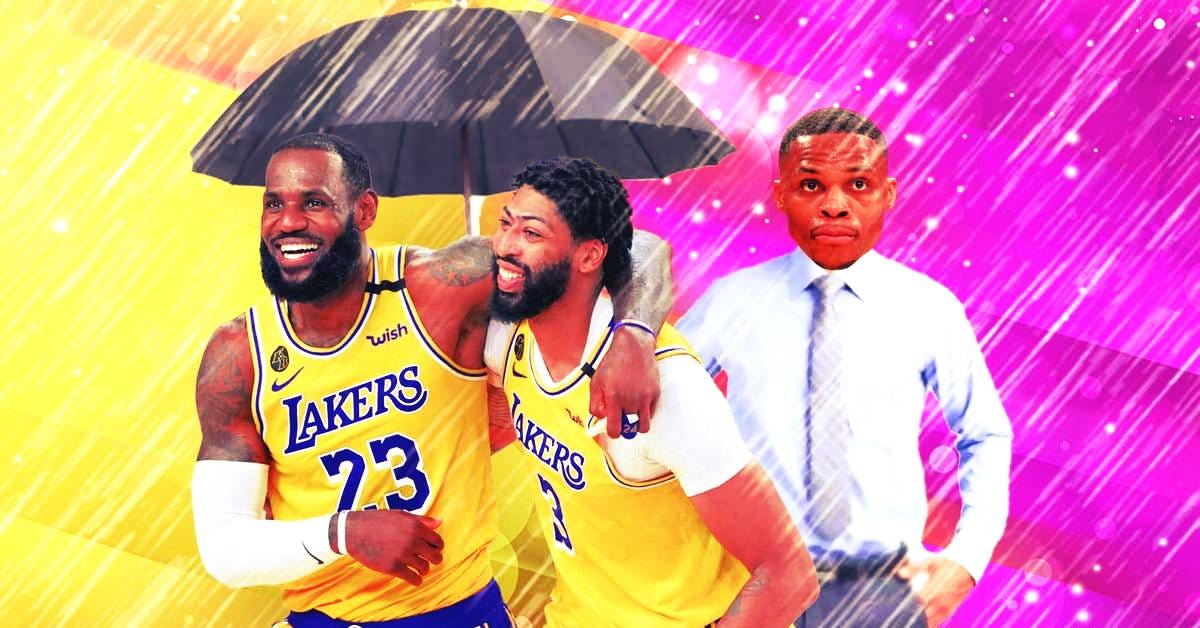
Unless the Lakers are willing to sacrifice the coming season and one of the two guaranteed years they have left on LeBron James’ contract, they need to be better positioned to trade Russ at the deadline than this summer.
The litmus test is whether the Lakers will have an opportunity to trade Russ for more at the deadline than this summer. In other words, did waiting until the trade deadline enable the Lakers a get better trade for Westbrook? The key midseason dates are December 15, 2022, when most players who have been traded will be eligible to be traded again, and February 9, 2023, which is the league’s midseason trade deadline for the 2022–23 season.
The Lakers early schedule is brutal and should give them an early test of whether or not Ham could make Westbrook work. Unlike this offseason, they should be able to dump Russ at the deadline without giving up picks. The problem is the Lakers are also not likely to get much back from trading Russ at the deadline since he’s just an expiring contract who’s already been paid half or more of the annual salary for the last year of his contract.
The only good thing that could happen at the deadline is the Lakers getting an opportunity to trade for Kyrie Irving or another star who is suddenly on the outs with his team. The Lakers would only trade picks for a third star. Following up with the Pacers or Jazz to see if they would accept one pick is also probably a no-go since the Lakers would not be willing to give up a pick or picks unless it would be for a superstar that they would sign long-term.
In the end, chances are that the Lakers would not be able to significantly upgrade the roster at the trade deadline because they appear to be saving their draft picks to use to find a third superstar or replacement for LeBron.
Where Would Lakers Be One Year From Now If They Keep Westbrook?
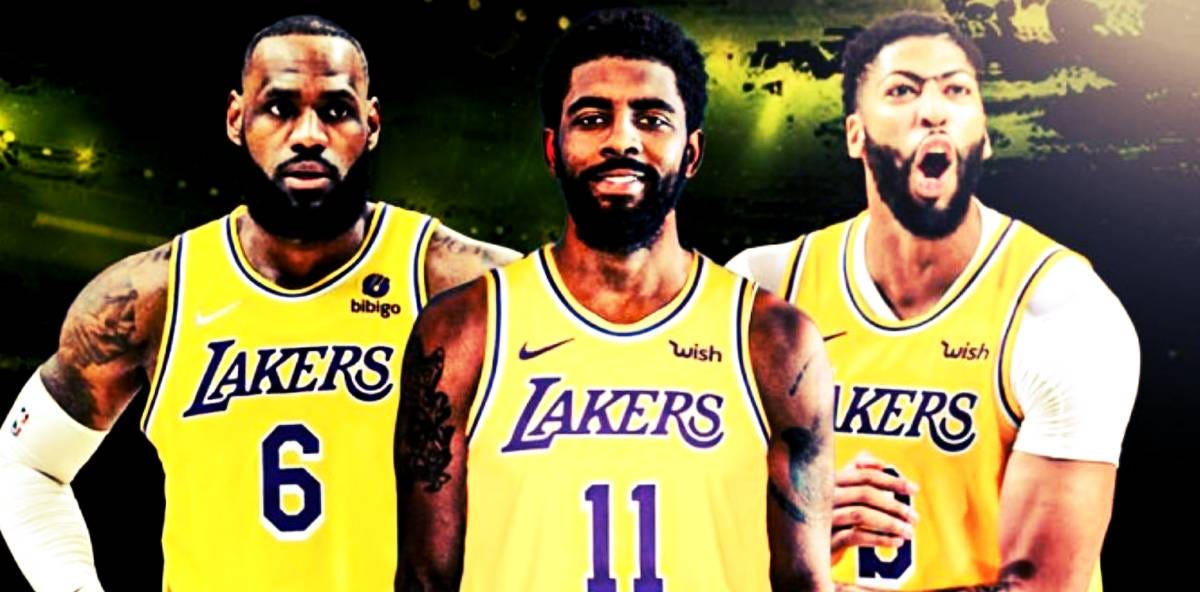
While running it back with Westbrook seems like a huge gamble, the Los Angeles Lakers apparently think the risk is not as great as it might seem and the benefits they get next summer could actually be worth the gamble.
So where would the Lakers be one year from now if they decide to bring back Russell Westbrook for the entire season and just allow his $47 million contract to expire at the end of the season and make no significant changes? Bringing back Westbrook is the Lakers’ stealth way of tanking as it could transform their 2023 first round pick into a lottery pick like last season when the Pels got a huge break when the Lakers’ pick was #9 last NBA draft.
Strategically, the Lakers would now have three rather than two first round draft picks in their portfolio to use to pursue a third superstar, although their 2023 first round pick could not be traded until day of the NBA draft. Having a top-10 pick in next year’s draft plus two post LeBron unprotected picks would improve the Lakers trade portfolio except that, due to players with expiring contracts and minimum salaries, they have no chips to trade.
What the Lakers will have is $35 million in projected cap space plus 13 open spots. While that’s not enough to sign Kyrie or another superstar to a max contract, there’s a chance the Lakers can make it work with multiple teams. Unfortunately, the lack of players to match salaries complicates the Lakers’ situation next summer. Aside from zero continuity, this is the problem with chasing a third superstars with cap space rather than tradeable contracts.
Bringing back Russ and allowing his contract to expire does give the Lakers multiple weapons like open cap space and multiple draft picks to acquire a third superstar like Kyrie but at the high cost of a second losing season.

